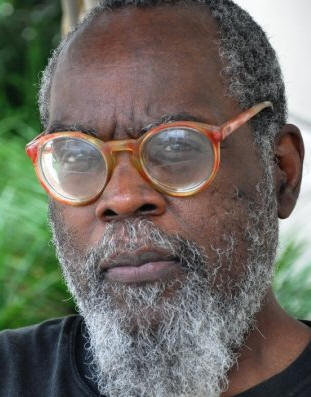This content is being reviewed in light of recent changes to federal guidance.
A Letter to Kalamu Ya Salaam
 Note: For essential life history information about ya Salaam, read “Kalamu ya Salaam 1947-/Art for Life: My Story, My Song” in Contemporary Authors Autobiography Series, Volume 21, pages 179-252. The letter is my response to the typescript of THE SOUND (ING) OF BLACK POETRY: A Study Guide To The Theory and History of Black Poetry.
Note: For essential life history information about ya Salaam, read “Kalamu ya Salaam 1947-/Art for Life: My Story, My Song” in Contemporary Authors Autobiography Series, Volume 21, pages 179-252. The letter is my response to the typescript of THE SOUND (ING) OF BLACK POETRY: A Study Guide To The Theory and History of Black Poetry.
Jerry W. Ward, Jr.
1872 Lincolnshire Blvd.
Ridgeland, Mississippi 39157-1213
September 3, 1995
Dear Kalamu,
The ideas for the book on the sound(ing) of black poetry remind me of a remarkable (and as you might guess unrecorded) solo performance by the late drummer Freddie Waites — sound so keen so fast you would have sworn the man had an extra pair of arms. So, the two things you warned us about in the prefatory paragraphs are going on: 1) a critique of why there is no sustained critical attention given to poetry and 2) theorizing about the centrality of sound.
These remarks refer to the book typescript version, running from “Introduction,” pp. 2-77 and notation 1 – 18, pp. 121-146.pp. 7-8 Your remarks about oral poetry, the positive/negative features of slave narrative and African aesthetic will need to be amplified to support your theory. Given that you privilege SOUND (the sounds of the voice, the musical sounds produced by instruments), sound is at once a defining historical aspect of black poetic tradition and a feature of aesthetic classification. The sound of pre-Reconstruction oral poetry is very likely best preserved in how the folk sing spirituals, in group performance. Part of your implied argument regarding textual or written poetry is that creation is not necessarily collective and the sound (as one might recover it through study of prosody) is wanting. Thus, when you posit an origin with the three founding fathers (Hughes, Johnson, Brown), you are obligated to make your sound theory persuasive. The strongest move is to admit that origin for you means the self-conscious poet weds his imagination and craft to the collective sound-productions of his culture(s): speech, song, music. Your major task is to theorize how SOUND function in or defeats the limits of TEXT. You will ultimately wind up with the conclusion that the SOUND feature of a poem can only be got to by improvising in performance.
p. 14, paragraph 2: Poetry might be
“judged” or “criticized” by prevailing standards, but it would most likely be categorized by genre or theme.
p. 19 Cultural Context
The question on p. 21 about whether a text is a sophistication or a corruption does have an answer: text is a preservation that undermines the power of memory.
P. 22 –your point about the necessity of audience is crucial; the sound of poetry (aside from the white noise of prosody) does not exist without performer and audience. There are a range of special conditions that obtain in the sound(ing) of poem. For example, to read (respond emotionally to) Hughes’s ASK YOUR MAMA in isolation, I have to perform the text either with the assistance of recorded music or by evoking musical memory. There is no ideal reading/sound(ing). I will always fall short one way or another in performed interpretation. I mention this early because I want you to anticipate someone’s attacking the idea by way of Houston Baker’s discussion of blues matrix as grounds for interpretation. (Blues, Ideology and Afro-American Literature)
pp. 22-23 — on cultural specificity: I agree very much with your pushing the dynamic interaction that does or should exist between audiences and poetry. Even the most enlightened critics in cultural studies are still text-whipped in the sense that textual features are said to reinforce or challenge rules, conventions, and constraints of a culture. Your idea allows for the possibility of disruption and recreation.
P. 24 Your extended commentary on democratized literacy is anxiously awaited. Consider whether this topic refers to “a Black aesthetic” ( a formation) or to “Black aesthetics” which I take to be an ongoing inquiry.
I think we pretty much covered my concerns about the SEED portion of the book that you will send to Gabbin when we talked last night. You can write a brief introduction and focus only on Hughes for this piece. What you might want to cut out is the material on James Baldwin and end the piece with a demonstration of your own response. The most interesting demonstration in my view would be your marginal “sound notes” which clued us about what must be heard or what you hear for “Mirror-go-found / where a broken glass / in the early bright / smears re-bop / sound” from the segment “Neon Signs.”
Keep on pushing,
brother.